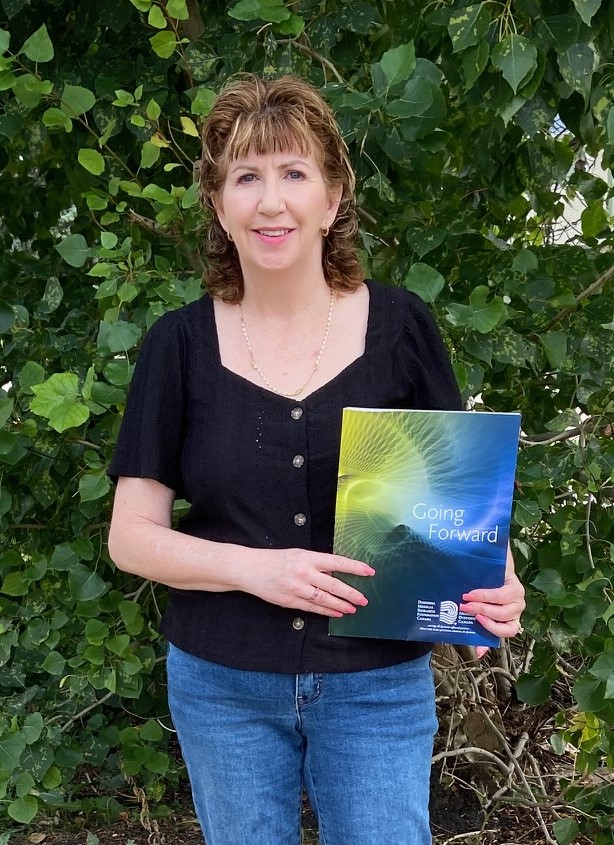Jennifer Lovell is our Winnipeg Support Group Leader and a courageous member of the dystonia community. Jennifer's journey with dystonia has been filled with challenges, but it is also a testament to her resilience and determination to advocate for better awareness and treatment of this condition. Here, Jennifer candidly shares her story in the hope of inspiring others and driving change in the dystonia community.
"You may not see it but there’s a war going on inside my body."
– Jennifer Lovell, Winnipeg, MB
Dear Friend,
I’m sure my story will sound familiar to many of you. Sadly, the loss that I experienced because of dystonia is something that others in the community understand all too well. Only now, in my mid-50s, do I fully understand the impact dystonia has had on my life, what a difference earlier medical interventions could have made, and why I am committed to changing the future for others.
Going Back to the Beginning
Since I was a child, generalized dystonia has been lingering in the background. At age three, my family noticed signs of stiffness, spasms, and cramping in my legs, but it was ignored as they assumed I would grow out of it.
Through my teens and into young adulthood, my symptoms became more pronounced, but doctors weren’t sure what was wrong with me. When my jaw became greatly affected, I saw a dentist who insisted it was nothing more than stress. Constant headaches and neck pain soon followed. I sought help from a pain clinic to help alleviate the extreme discomfort I was experiencing. The treatment of nerve ablations (destroying the nerves at the pain point) didn’t work because it was dystonia causing the pain. I was forced to self-medicate using Tylenol to get through school, motherhood, and work for more than 20 years.
What Dystonia Took from Me
At age 35, I was working a demanding job at the Faculty of Medicine at the University of Manitoba. I was still able to move fairly well, but it was incredibly difficult to sit still at my computer. Ultimately, I could no longer work and had to resign. My social life was also greatly affected. With no formal diagnosis, people close to me suspected that I was just neurotic, so I stopped going out and socializing.
A little over a decade passed, and I was getting progressively worse. I visited a neurologist who recommended a movement disorder specialist for my condition. I was annoyed with the suggestion of seeing yet another specialist and rolled my eyes. At my appointment with the new specialist, he took one look at me and could see I had dystonia. I was mad and bewildered when I left the office. The word “dystonia” echoed in my mind, and I thought, well, ‘what is dystonia?’ I researched my symptoms as soon as I got home, and based on what I was reading, it finally felt that I knew what had been happening to me. I was happy about putting a name to what I was experiencing.
Finding Hope with a Diagnosis
After receiving my diagnosis of generalized dystonia, I started a treatment plan that has greatly improved several of my symptoms: stiff legs, foot spasms, and neck and jaw pain. While not perfect, it provides quite a bit of relief and I’ve reduced my pain medication usage by half. I’m back working again part-time at a music conservatory and returned to university for a graduate degree focusing on health care.
During a follow-up visit with my neurologist, I asked him why I wasn’t diagnosed sooner. Where did I go wrong? I had visited doctor after doctor, specialist after specialist, and I would leave angry because no one seemed to understand my problem. He said that it wasn’t my fault and that people just don’t know about dystonia.
From there, I told everyone I could about my journey to a diagnosis. I felt it was my duty to warn others so they didn’t have the same outcome. While searching for more people with dystonia, I looked up Dystonia Medical Research Foundation (DMRF) Canada’s Winnipeg Dystonia Support Group, joined, and eventually became the Group’s Leader.
As a DMRF Canada Support Group Leader, I host regular support meetings and connect one-on-one with other people living with dystonia. Despite the strides we’ve made in raising awareness of dystonia in the medical community and the public, I still hear very similar stories to my own, and I want to fight to change this.
Fueled by my own history and interest in health care along with others’ shared experiences, I am constantly seeking ways to improve patient outcomes and enhance their healthcare experience. So, I was floored to learn that there are only about 80 movement disorder specialists nationwide. This underlines the need to invest not only in research to find a cure but also invest in the training of specialists to improve access and reduce wait times for patients. This is where I know DMRF Canada plays a critical role in shaping the future of healthcare for the 50,000 Canadians living with dystonia.
Together, I know we can transform lives. Let’s fight to ensure that people with dystonia aren’t waiting 44 years like I did for a correct diagnosis and treatment. By working together to support investments in research, I know that a cure will be found.
Sincerely,
Jennifer Lovell
